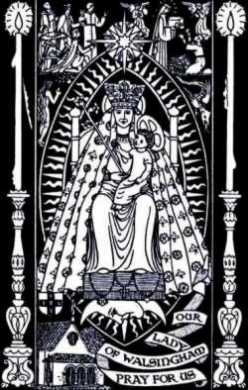A few new, special touches for Christmas in Rome this year.
- The placement of a sculpture of the Virgin and Child Jesus on a throne traditionally displayed on the solemnity of Mary, Mother of God: This year it will be placed next to the altar of confession for a longer period, from Christmas Eve until the feast of the Epiphany. This change emphasizes that "Christmas time is a Marian time," explained the monsignor. The Virgin Mary does not take attention away from the mystery of the Son of God made man. On the contrary, he said, "she helps us to understand the mystery in its true significance."
- Importance will be given to the time of preparation for the celebration, such that "the alternation of readings, prayer and music will help to prepare the souls of all those present for a climate of adequate reflection." Along the same lines, there will also be a brief moment of silence after the homily of the Holy Father and after the distribution of Communion.
- On Christmas Eve, as in past years, there will be a prayer vigil in preparation for Mass, but this year it will be enriched with the singing of the ancient text that announces the historical birth of the Savior, the Christmas Proclamation of the Birth of Christ from the Roman Martyrology, which will not be sung during the Eucharistic celebration. Instead it will be the last part of the vigil and will begin the opening procession for Mass. (This I wonder about, because the GIRM explicitly defines the appropriate time for the chanting of the Christmas Proclamation from the Martyrology during the Mass at Midnight.)
- In the singing of the Gloria, after the Holy Father's intonation, the bells will ring with the accompaniment of the organ, but there will not be the traditional rite of the offering of flowers from children who represent the various continents. This offering will be moved to the end of the Eucharistic celebration, when the Pontiff goes to the Nativity scene in order to place the image of the Child Jesus there.
- During the blessing urbi et orbi, the Pope will not wear a cope, the master of papal liturgical ceremonies further mentioned. "He opted for the shorter cape with the stole, as it is a solemn benediction that is not connected to a particular rite."
- This year, on the feast of the baptism of the Lord, the Pope will celebrate Mass in the Sistine Chapel. "It will once again be celebrated on the old altar in order to not alter the beauty and harmony of this architectural jewel, preserving its structure from the celebrative perspective," the monsignor affirmed. He added, "This implies that at some moments the Pope will turn around to face the crucifix, along with the faithful, thereby underlining the correct orientation of the Eucharistic celebration: the orientation to the Lord." (Ad orientem!)
- The languages chosen for the readings and the prayers of the faithful will reflect the participation of people coming from the various countries of the world, while the Latin used in the celebration will "express the unity and catholicity included in the diversity" of those people of various tongues.
- After the singing of Vespers on the last day of the year, there will be Exposition of the Blessed Sacrament with the singing of the 'Te Deum' of thanksgiving and the subsequent Eucharistic benediction, which will show the centrality of adoration in the life of the Church.
- During the Mass of Jan. 1, children and adults from Lebanon will take part in the presentation of the gifts and the prayers of the faithful.
- For the solemnity of the Epiphany, the Pope will again wear a chasuble from Paul VI, "in order to underline once more the necessary balance in the liturgical use of new and old things."



_Black_s_s_s_s_s.jpg)
